Dunraven - Enchanting Havens
- Lilium

- Jun 14, 2020
- 6 min read

Today we are going to Dunraven Bay, I thought the sea air might brighten our day. This cove inspired me to write a series of children's books about haunted headwear and ominous orchestras, all in rhyme or alliteration, set in the bay and the village of Southerndown near by.
So we shall drive past the abandoned Dunraven Hotel with it's tower, the Three Golden Cups pub and Frolics, the lovely little family run Italian Restaurant, past the little cottages to reveal behind the stone pillared gate, the best view of Dunraven Bay and the ruins of a lost Welsh marvel.

Dunraven Castle was a mansion on the South Wales coast near Southerndown. The existing manor house was knocked down which is a tragic loss for the house and it's location in the bay created something incredibly beautiful. This seems to be the narrative of many of Wales' historical sites, constantly and consistently obliterated.
But not all is lost. The castle's walled garden, gatehouse and several other structures still survive and are protected by the Glamorgan Heritage Coast.
We will be taking a closer look at the beach and most of all the castle's walled gardens, which have been restored by the Heritage Coast Project. The walled gardens have been split into four sections, each with a theme and purpose. We start at the site of the greenhouse in:
The Victorian Garden

"Under the Victorians, gardening became fashionable.."
Upon entering though the old door in the wall, which opens with a satisfying creak, in front of you is the site of the original lean-to greenhouse which was used as a vinery. Best results were achieved from vineries where the vines were left to ramble "at their own sweet will" in a properly prepared border. Such was the case at Dunraven but as the glasshouse was demolished long ago all that is left are the base brick arches. The Glamorgan Heritage Coast have managed to raise enough money for a small glasshouse to grow on seedling and plants.
On the other side of the garden is the Lords Walk, which is lined with two deep borders of flowers, that leads you to a small pond surrounded by rose shrubs and if you peer into the water you can see all the coins that have been thrown in for wishes.

Past the water and through a leaf covered arch, we head into the next part of the garden.

The Relic Orchard

"It was the Victorians who made fruit growing a fine art in Britain, with elaborate often ostentatious designs of training fruit"
On our left is the Relic orchard, the trees twist and bend with age against the background of the wild area, which the volunteers left wild to show how nature will always find a way in. Through the dappled sunlight you can just make out what is left of the original castle facade that would have led up to to house. Now, like many places in Wales, it looks like a lost fairy ruin.

On our right are the new fruit trees, planted in organised rows in the grass, and is the perfect place to stop for a picnic and walk barefoot checking to see if any fruit have ripened. And now we must got through another arch into the next walled garden which has a lot more to say.
The Plant Hunters' Garden

Here the garden is split into sections, with each section dedicated to some of the intrepid young men who endured hardship and atrocities to bring back plants to Britain during the golden age of plant hunting.
The first section we come to is the Tradescants, a father and son who dedicated their lives to the collecting and growing of plants, both becoming gardeners to King Charles I.

Then we have David Douglas, who was one of the bravest, most intrepid and one of the most successful hunters.
During his 12 successful years in travelling the continents, much of which was still unexplored or even mapped, he introduced 210 species including Lupins, which were crossed with those found by the Tradescants, to produced the hybrids we have today.
Next is George Forrest, whom in his 28 years of collecting sent home from the provinces of Yunnan no less than 31,000 herbarium shoots and an equal number of separate parcels and seeds. The areas where he collected were a paradise for botanists and collectors, and his success as a plant hunter and specialist in Rhododendrons, was quite phenomenal.
The two sections in the corner by yet another towering arch are Reginald Farrer and Robert Fortune, Fortune was sent out in 1843 by the Royal Horticultural Society on a salary of £100 per year with a long list of undertakings, including the search for blue peonies and yellow camellias. Farrer was the odd man out amongst the great plant collectors, preferring to stay at at home botanising in the surrounding Yorkshire countryside than hacking through a rainforest on the side of a cliff.
The largest section is Ernest Wilson, who became perhaps the most famous of the modern day collectors on account of the vast numbers of plants he introduced, at least 1,500 previously unknown species all before turning 23.

In 1903 he brought home Lilium Regale (Beverley Nichols favourite lily). However it had not been a successful introduction and he decided to return in 1910 to collect more of this enchanting plant. Having found the mountain-side where it grew in huge drifts he and his men whom he had trained as collectors, dug 700 bulbs.
On their way back along the narrow mountain track they were caught in a sudden avalanche throwing rocks onto the group and smashing into the Sedan chair in which Wilson was riding and he was hurled hundreds of feet into the valley below.
Luckily he was able to jump clear but could not escape one large boulder which crashed onto him breaking his legs in two places. His camera tripod was used as a splint but it was a three day journey before they reached a doctor during which time he had to endure unbearable pain. His injuries were so bad that doctors wanted to amputate but he would not let them. After months of suffering he returned to the USA where he was cured but was left with a limp which became know as his "Lily Limp".
His career was not over as in 1914 he visited Japan to bring back new species of cherries. It was here that he made a major discovery, the evergreen Kurume Azalea. In 1920 he introduced these to the west, a dramatic climax to his plant hunting career. So you can see why he had the biggest section at Dunraven.
And finally we come to the last part of the walled gardens, through an arch draped in white wisteria.

The Tudor Garden & The Ice Tower

The Tudors were the first to make these kind of gardens. The gardens were meant to act more as outdoor rooms and provide an ideal format for growing herbs which played an important part in the culinary, medical and social lives of the Tudors.
The garden at Dunraven has two open green spaces, a large grass area and the croquet court and each wall has a bed with a purpose much like a physic garden. The main beds are medicinal herbs with a corner for herb dyes and a recently added bed at the base of the Ice Tower for mystical herbs.
Overlooking the croquet court is the summer house which is flanked by two beds, one for fragrance herbs and roses, the other for perfume and cosmetic herbs.

And as we rest in the summer house, preparing to make the ascent to the Ice Tower we notice a plaque on the wall behind us. It is a poem, written by two solicitors from London in 1873, who were staying with the Earl of Dunraven.
Dearly I love Dunraven Bay
Under it's cliffs by night or by day
Near me the waves on the golden sand,
Roll widely in foam as they dash to the land.
At times it's so still, I fancy I hear,
Voices of lost ones, melodious and clear.
Even the driftwood seems to say
Never forget life is ebbing away.
And with that thought we will now walk up to the Ice Tower and see the serene view over the garden and the bay. As beautiful as the garden may be, the beach takes the crown (a seashell crown of course). Nature will always be the better architect.

The sun will be setting soon so we make our way back through the gardens to the beach to watch the sunset, collect some iridescent shells and find the see-through fish that swim in the pools, and luckily for us the ice cream shop is still open.





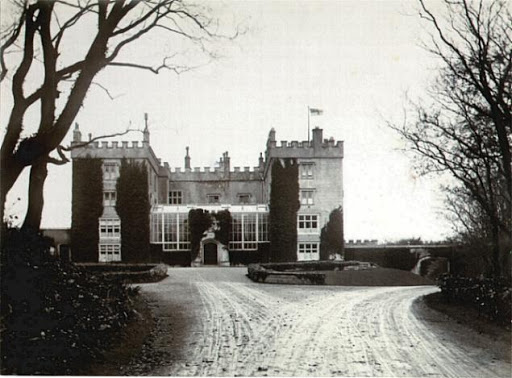









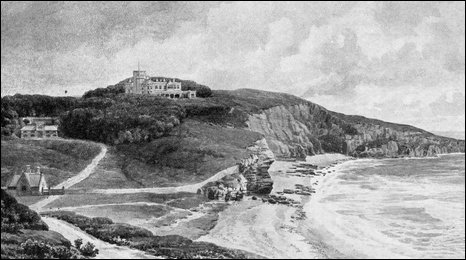

















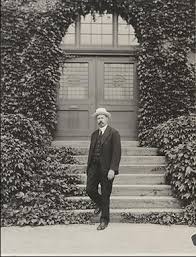
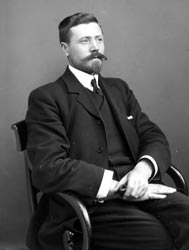













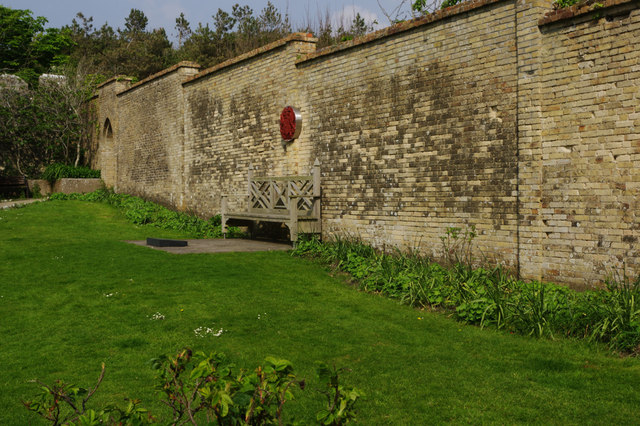









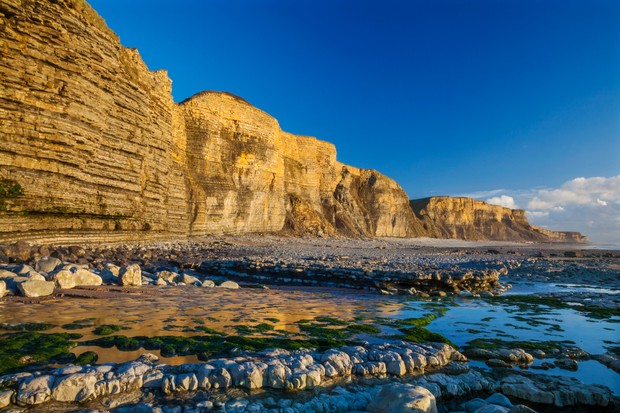











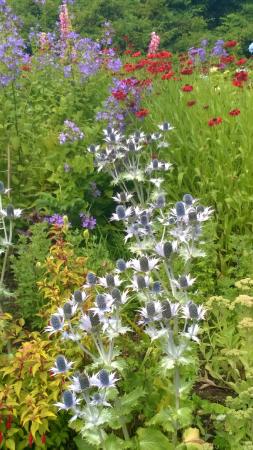

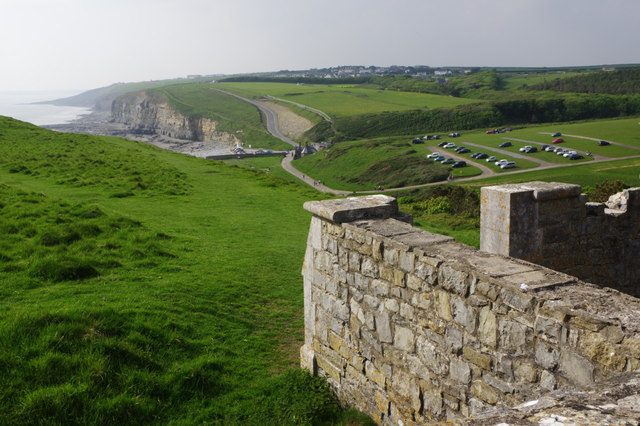







Comments